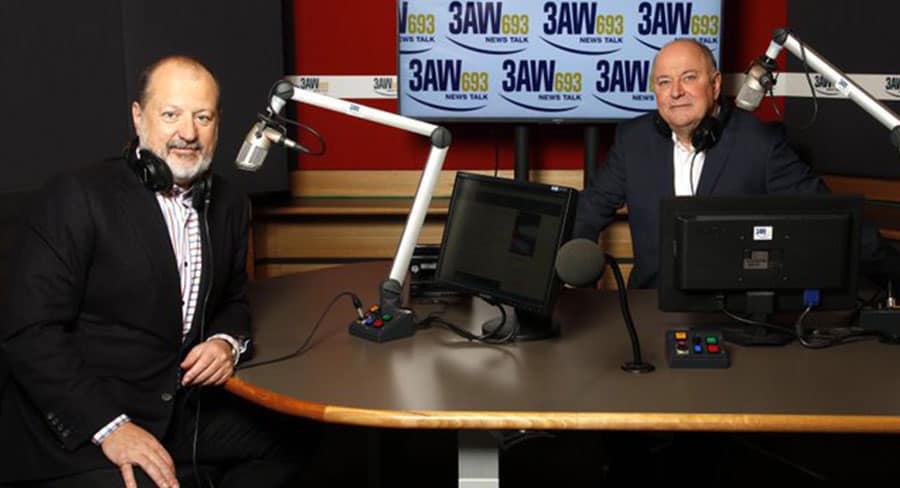Nine Entertainment group revenue down 2% half year Jul-Dec 2020 v 2019 – $1,182.5m to $1,162.8m
Net profit after tax up from $114.3m to $186.9m
Group costs down $124m (13%)
Broadcast costs down 71.2m (15%)
Rough Diamond’s Bump becomes Stan’s most successful show ever
Nine Entertainment Co has released its H1 FY21 results for the six months to December 2020. For the half, Nine reported revenue of $1.2b and a net profit of $182m, which included a post-tax specific item expense of $5m.
Half year highlights include:
Continued audience strength across all key platforms
Marked improvement in ad markets through Q2, with strong growth in BVOD and FTA
Continued growth from subscription businesses
$23m EBITDA improvement at Stan
26% growth in digital subscription and licensing revenue from publishing
Hugh Marks, outgoing chief executive officer of Nine Entertainment Co, said during his final results presentation: “Our business has performed incredibly well through this period of heightened volatility, and has come out the other side in a very strong operating position.
“We acted swiftly when circumstances changed, whilst continuing to embrace opportunity and remain true to our vision – of building Australia’s leading cross-platform media business.
“In these latest six months, the combined contribution from Stan and 9Now, and the digital components of Domain and Publishing grew by 53% to more than $140m, and, notwithstanding the strong recovery in earnings from our traditional markets, equated to 41% of our total EBITDA.
“From an advertising perspective, this latest half year was a tale of two quarters. The advertising market clearly turned in late September, earlier and more sharply than we had anticipated, and this was led by Television, both free to air and BVOD. The brand-building strength of these segments underpinned clear growth in market share overall for the television industry, that has continued into the first quarter of 2021. Nine’s consistently strong audience performance, across all of our platforms, means we are well positioned to benefit from this improvement in the ad cycle.
“The lessons we have learned from COVID are clear. Our focus on strict cost efficiency at our traditional media assets delivered the profitability we were targeting. And continued investment in our digital businesses is delivering strong digital profit growth. Together, enabling us to continue to migrate the business to a more flexible, digital-base.
“Moreover, the accelerated growth in businesses like Stan and 9Now, as well as our digital publishing mastheads, has enabled us to bring forward our longer term plans. And importantly has enhanced our competitive position across all segments. This will enable us to continue to invest in our audiences to ensure continued growth into the future.
“I’ve had a great five years at Nine, and am confident that I am handing over the reins at the perfect time – of a business which is clearly firing on all cylinders, but that has plenty of scope to accelerate its profitability in the coming few years.”

Television
For ratings season 2020, Nine was the #1 Network and Primary Channel in all key demographics. Nine attracted a commercial network share of 37.5% of the 25-54 demographic, 4.7 points ahead of its nearest competitor. On a primary channel basis, Nine’s share of the 25-54s was 38.3%, and 6.1 share points ahead of its nearest competitor. In the December half, Nine also won all of the key demographics.
FTA costs declined by 16%, or ~$70m. There were both cyclical and structural elements to the cost decline, which was partially offset by a close to $10m increase in revenue-related costs, given the stronger market.
The BVOD market grew by 44% for the half to $123m3, with both quarters showing clear growth (+41% in Q1 and 48% in Q2). 9Now recorded revenue growth of 30%, equating to share of ~45%.

Ross and Russel
Radio
The radio market generally had a difficult six months, with the advertising recovery lagging that of television. The metro radio ad market declined by 19% across the six months – Nine’s gross ad revenues declining by a similar quantum, with growth in agency share being offset by a softer performance in direct. First half costs declined by 18% or $9m, reflecting ongoing cost out, and restructuring initiatives. Nine Radio reported EBITDA of $3m, for the half.
Since Nine’s major format changes through the first half of calendar 2020, audiences have grown across all core talk stations. Recent changes in sales structures, coupled with this audience growth, are expected to underpin leverage as the ad market improves.
Publishing
Nine’s Publishing division includes the core Metro Media business as well as nine.com.au, Pedestrian Group and Drive. Together, Publishing reported revenue of $263m, (-9% on pcp) and EBITDA of $68m, up 27% on pcp.
Audiences across mastheads strongly increased over the half, with readership across The Sydney Morning Herald, The Age and the Financial Review up 22%, 24% and 25% respectively.
This translated into paying audience, with ~ 26% growth in digital subscription and licensing revenue. This strong growth in digital subscriptions reflects the structural trend of audiences paying for quality journalism, and an accelerating transition towards a business model focussed on recurring, digital reader revenue.
Offsetting, print retail sales declined 18%, with sharp reductions particularly from the hotel, airport and CBD segments.
Digital advertising revenue grew marginally in the first half, with growth in mastheads, nine.com.au and Pedestrian. Print advertising remained soft however, with the leading travel and luxury goods categories being hard hit by lockdowns.
Overall, Publishing costs were down by 17%. Of the almost $40m reduction, around half related to production and distribution, driven both by reduced print volumes and our new printing arrangements. While COVID-related timing issues account for more than half the cost out in this period, incremental initiatives through calendar 2021 and 2022 will more than offset, with the previous outlined target of a c$30m maintainable net cost out (from 2019) remaining intact.
In total, Publishing EBITDA increased by 27% to ~$68m for the half.

Stan
During the half, Stan consolidated on the subscriber gains of FY20, with the strong summer period resulting in current active subscribers of 2.3m. Across the half, Stan sourced content from 18 different distributors. Particularly popular were Sky Original Gangs of London, the Bryan Cranston series Your Honour (CBS Showtime), the reboot of Saved By The Bell (NBC Universal), the hit new UK drama series It’s a Sin (All3 Media), Clarice (MGM) and Stan Originals A Sunburnt Christmas and more recently Bump, which was released on January 1 and has quickly become Stan’s most successful show of all time. Across the half, total streams increased by almost 20%.
The higher subscriber base going into this half, coupled with the September price increase (premium plan subscribers from $17 to $19) underpinned the reported 28% growth in revenues. Costs increased by 10% (split fairly equally by content and marketing), resulting in an EBITDA more than doubling to $37m.
The strong subscriber growth of the past 12 months has enabled Stan to expedite previous growth ambitions. During the half, Stan announced a long-term content deal with NBCU, the launch of Stan Sports as well as an increased commitment to Stan Originals. Already, Stan has a strong market position and significant EBITDA and cash profitability. There remains substantial upside in both subscribers and profitability for Stan on a longer-term basis.
